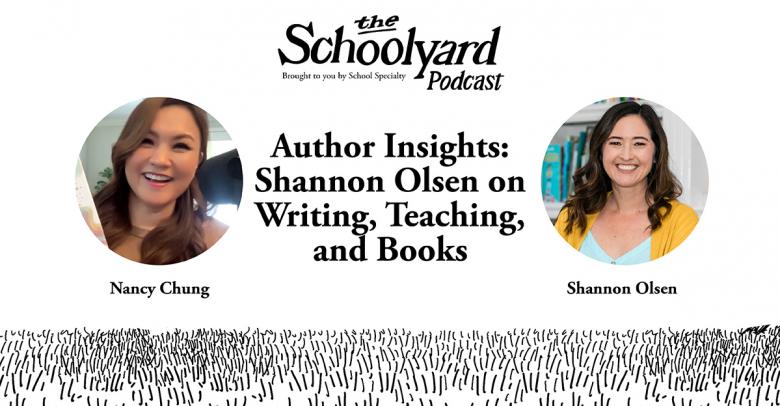Educators often come up against the argument that the skills and concepts they are teaching in class have no real connection to daily life. When it comes to STEAM concepts, there are a million ways to capture the imagination and interest of students who are probably already using them every day. Give your students an opportunity to learn how STEAM skills and concepts are important for everyone.
What Are the Most Valuable STEAM Skills?
Not only are employers looking for employees with an education, but with experience in working with important STEAM skills. Innovators in an increasingly digital world should be entering the workforce with practice in the following valuable STEAM skill areas:
5 Important STEAM Skills to Teach in School:
- Problem-Solving
- Communication
- Creativity
- Collaboration
- Critical Thinking
STEAM skills have been traditionally linked to the Math, Technology, Science, Art, and Engineering content areas. The incredibly valuable skills in the list above are foundational to those areas of study, and will serve students throughout their lives. Regardless of a students’ direction in career or hobby, STEAM skills will benefit their ability to make data-driven decisions and work through challenges.
5 Everyday Life Examples of Ways to Use STEAM Skills:
These simple, real-life scenarios may provide your students with a little background and reinforce their motivation to learn more about and understand the practical value of STEAM skills they are practicing in the classroom.
Give students the following examples and then ask them to brainstorm a personal example of a time they used each of these STEAM skills in everyday life.
Problem Solving:
Problem solving requires a student to quickly make sense of an issue by analyzing all the factors involved. Then, their goal is to use the analysis to propose appropriate solutions.
Example: You are hungry and you’ve run out of your go-to snacks.
You might decide to just wait until dinner, or you might decide to problem solve. First, you consider the last time you ate and what you had. This helps you gauge how hungry you are and what type of snack you’ll need to tide you over. Then, you’ll take a look at what’s available for you to choose from.
Taking into consideration your hunger levels and the available options, you choose a snack that resolves your hunger despite the fact that your favorite snack was not available. Problem solved!
Communication:
Communication requires you to share information with another person or group of people using the most effective method and language.
Example: You want to visit a friends’ house, but your parents aren’t home to ask.
You might decide that since you can’t ask them directly that you will simply stay home, or you might find the most effective way to communicate your wish to visit a friend despite the complications. There are several things to consider based on your relationship with your parents and the expectations they have set for your communication. You might write them a note for them to read when they get home. You might wait until you get home to tell them where you were. You might also call their cell and speak with them or leave a message.
Taking into consideration the fact that your parents don’t like you to leave without speaking to them, you decide it would be most effective to call them and ask for permission to visit your friend. Communication success!
Creativity:
Growing creative skills or thinking outside of the box requires experimentation and learning from successes and failures.
Example: You want to paint your bedroom but you can’t tell if you’ll like the color you chose.
You might decide to wait and see what the room looks like when you’re done, or you might find a creative way to get a better idea. You have a variety of tools at your disposal, so you decide to use your artistic skills to find out what the paint color will look like in your space.
Using your cellphone camera, you take a picture of your bedroom. Then you upload it onto your computer and use an image editing software to replace the current wall color in the photo with one more similar to your new color. Using that image, you are able to make a more informed decision. That’s a creative, outside-the-box way to think through a challenge.
Collaboration:
Collaboration requires individuals to communicate and operate as a part of a cohesive team to complete a project or solve a problem.
Example: You were assigned a group project in science class.
Between yourself and 3-4 other classmates, you have to research a topic, write a paper, and present your findings to the rest of the class. Between the members of the group you have to consider each person’s strengths, interests, and time management skills to assign out the tasks. It’s important that all of the tasks happen in the correct order and that they are completed on schedule.
You sit down and have a meeting where everyone shares their preferred task and how much time they have to commit to the project. Because the workload was evenly distributed and everyone communicated effectively, the project received an A. Successful collaboration!
Critical Thinking:
Critical thinking requires the use of analysis to synthesize information and make objective, data-driven decisions.
Example: You are helping your friend pack up their belongings to move to a new house.
When you’re packing, you have to consider time constraints, how many items you have to pack, the size, shape, and weight of those items, and many other factors.
You take all of those factors and conclude how much time and how many boxes you’ll need. The packing process was more efficient and successful because you analyzed all the observable factors and made data-driven decisions.
More STEAM Ideas & Activities for the Classroom
If you’re looking for more ways to engage students in STEAM learning or the development of 21st century skills, be sure to visit the STEAM & STEM category page to see what’s new. You’ll find lesson plans, must-have tool suggestions, and more.
Head over to the online store to shop from thousands of high-quality STEAM education curriculum products and tools. You’re sure to find whatever you need to engage your students and foster a lifelong love of learning.






Definitely, we use STEAM approach in day to day activities and decision making.
STEAM approach is not only applicable in the classroom but also in our everyday lives. How we think, solve challenges, interact with people around us should reflect STEAM learning.
The use of STEAM in our teaching and learning process is essential to the overall development of the curriculum of our educational services.
While many people must have unconsciously applied the STEAM approach to enquiring, analyzing, and solving problems of their daily life at home, the relevance of the STEAM skills of problem-solving, communication, creativity, collaboration, and critical thinking which cannot be over-emphasized in the modern and dynamic sphere of the workplace should consciously be pedagogized in schools. It should be the foundation of every curriculum build-up.
The skills acquired in STEAM is very useful in our daily life, for example the critical thinking abilities will help in taking decision while with collaboration we can perform better in our work place.
The skills acquired in STEAM is very useful in our daily life, for example the critical thinking abilities will help in taking decision while with collaboration we can perform better in our work place.
When we incorporate problem-solving, communication, creativity, collaboration and critical thinking into our everyday life. We make progress steadily
TEAM Skills benefits both the facilitators and the learners.
Education becomes more participative and interesting as the STEAM skills are applied in the classroom.
Everyday life challenges are incorporated into learning process to create a more critical thinking approach in problems solving for learners
Steam skills are applicable in our everyday life experience in solving challenging problems. Actually steam skills makes one go through day to day life challenges effortlessly
Steam education is a broad concept that helps both teachers and most especially the learners acquire knowledge to plan and execute a particular task
Steam skills such as problem solving, communication, creativity, collaboration, and critical thinking are a rear tools in handling the challenges we come across in our daily life.
When we work together as a team we can achieve a better goal in what ever we do i.e is collaboration. With STEAM we can achieve a lot
The importance of STEAM in our day to day life scenarios can’t be overemphasized.
STEAM is not limited to the classroom. We must understand the application of STEAM in our everyday lives. The students must com to see that STEAM is not another new and vague concept but a concept they have been using in their everyday life. when this happens they can apply STEAM in their subjects and even outside the four walls of the classroom